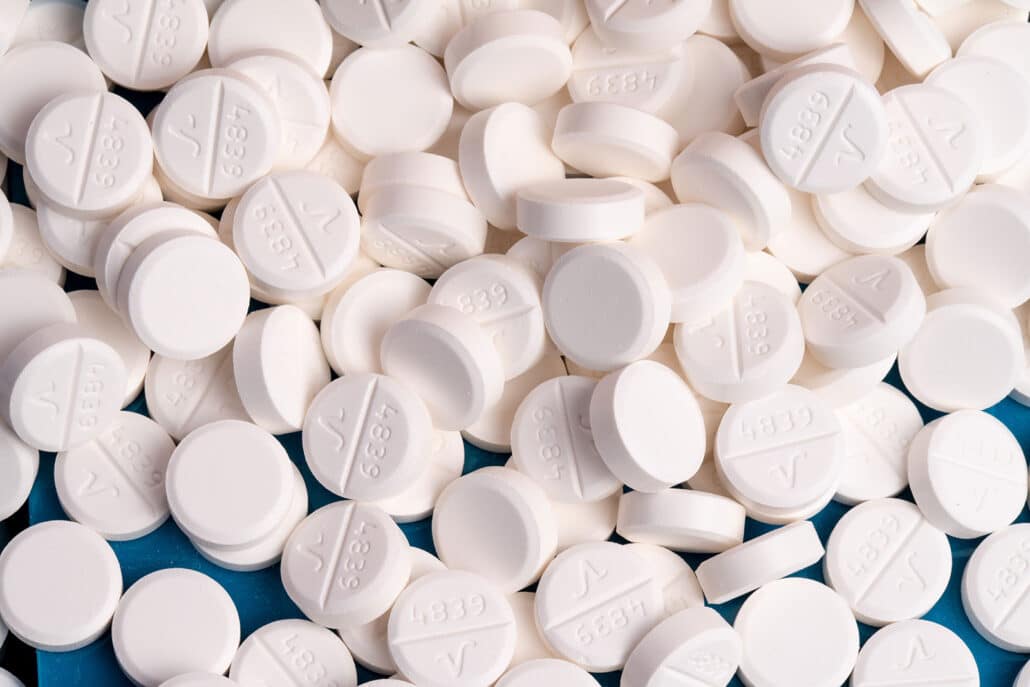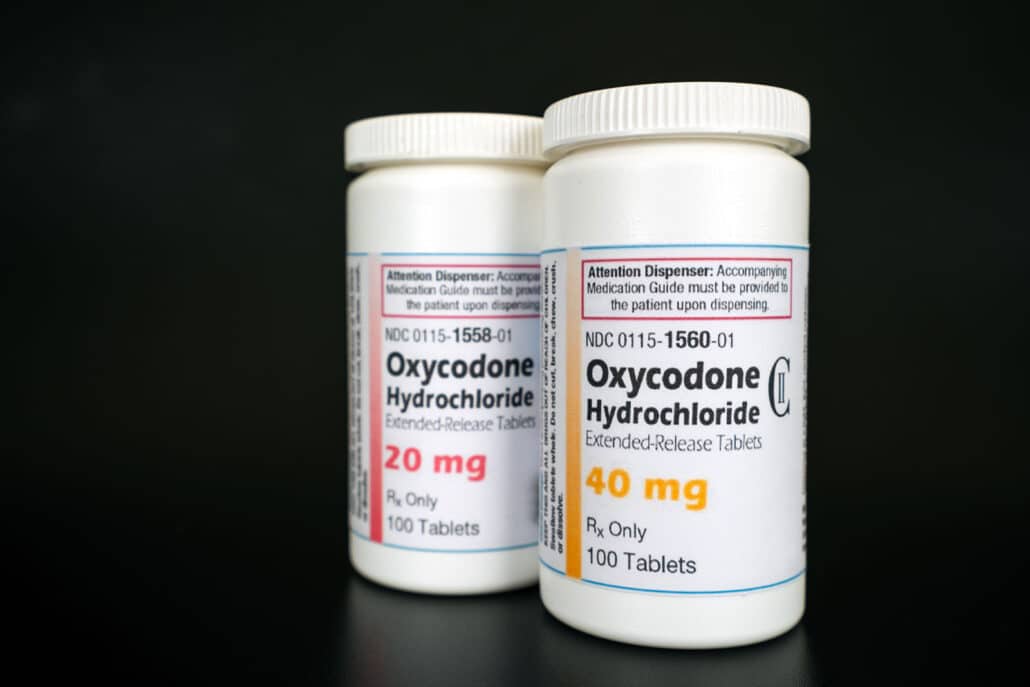Oxycodone is a prescription opioid medication that is used to treat severe pain. It is generally only prescribed when a patient either isn’t getting relief with other pain relievers or is able to tolerate them. Oxycodone relieves pain by acting on the central nervous system. People who take oxycodone sometimes wonder how long the drug stays detectable through urine drug tests. How long does oxycodone stay in urine? The “general” answer is up to five days. However, the answer can vary by person based on a number of individual factors. Keep reading to learn more about how long oxy shows up on urine tests.
Table of Contents
- 1 How the Body Processes Oxycodone
- 2 Detection Times for Oxycodone in Urine
- 3 Factors That Influence Oxycodone Detection Time in Urine Samples
- 4 Why Understanding Detection Times for Oxycodone Is Important
- 5 Side Effects of Oxycodone
- 6 Breaking Free From Oxycodone Use: How Long Island Interventions Can Help
- 7 Find Help for Oxycodone Dependency in New York
How the Body Processes Oxycodone
Oxycodone is primarily metabolized by the liver. After ingestion, it activates the body’s natural opioid receptors. While these receptors are found all over the body, their heavy concentration in the brain and central nervous system is responsible for the pain-relieving effects and feelings of euphoria experienced by people taking opioids. Like all opioids, oxycodone’s impact on opioid receptors alters how pain signals are transmitted between the brain and body. When taken in large quantities, oxycodone can act as a depressant on the nervous system that slows heart rate and breathing to potentially dangerous levels, leading to respiratory depression.

After being metabolized by the liver, about 72% of each oxycodone dose taken is excreted through urine. This is why urine drug tests are considered effective for detecting both oxycodone and opiates in general. Of that 72%, 8% is excreted as oxycodone, 47% as oxidative metabolites, and 18% as reduced metabolites. According to the National Library of Medicine, opioid urine testing may be used for the following purposes:
- Employment screening.
- Legal evidence following motor vehicle accidents or alleged criminal activity.
- Sports testing for athletes.
- Checking drug levels during admittance to detox and addiction treatment centers.
- Monitoring misuse of prescription opioids to ensure that a patient is taking the right amount of medicine.
Detection Times for Oxycodone in Urine
How long does oxycodone stay in urine when taking a drug test? In general, the detection window for oxycodone in urine drug tests is one to four days after the last dose. While some people may test clean in just two to three days, it’s possible for someone to still have detectable levels of the drug in their system after four full days. Chronic and high-dose oxycodone users are more likely to have extended detection due to the high concentrations of the drug in the user’s system.
| Type of Test | Detection Window | Details |
| Urine Test | 3–4 days | The most common testing method. Oxycodone and its metabolites, like noroxycodone and oxymorphone, can be detected for up to 3–4 days depending on kidney function and usage frequency. |
| Blood Test | Up to 24 hours | Detects oxycodone more immediately due to its shorter half-life in blood. Typically used in clinical or emergency settings to monitor acute opioid use. |
| Saliva Test | 1–2 days | Saliva tests are less invasive and detect oxycodone shortly after ingestion, including immediate-release and extended-release formulations like OxyContin. |
| Hair Follicle Test | Up to 90 days | Hair tests can detect long-term oxycodone use but are less common for pain management patients. Useful in cases of suspected substance abuse or chronic use. |
| Factors Affecting Duration | Varies | Detection times depend on the half-life of oxycodone (3–5 hours), the formulation (immediate-release vs. extended-release), frequency of use, and individual factors like metabolism, kidney function, and age. |
Factors That Influence Oxycodone Detection Time in Urine Samples
As shared above, chronic and high-dose oxycodone users generally have longer detection times. Even single high-dose uses can cause detectable amounts of oxycodone to linger in the system ahead of a urine test. Additionally, an individual’s metabolism can impact urine detection times for oxycodone and other opioids. Physiological and genetic factors can influence how an individual can break down and metabolize a specific type of drug. Additionally, body size and composition can affect drug metabolism rates. For example, a 2023 paper published in the Journal of Clinical Pharmacology notes that obesity can impact oral drug absorption due to alterations in gastrointestinal physiology and function. Hydration and liver function can also affect how quickly the drug is metabolized.
People often wonder if drinking large amounts of water can dilute oxycodone in urine drug tests. If someone is chronically dehydrated, they will have more concentrated urine that could have larger amounts of lingering oxycodone. However, some people trying to pass urine drug tests for oxycodone will drink excessive amounts of water in an attempt to “flush” their systems. Unfortunately, this will result in what’s known as a diluted specimen. During urine drug tests, urine dilution triggers a specific result that deems the test invalid. As a result, the laboratory will need to either check the concentration of the urine using a more intensive test or request another urine sample for retesting.
Why Understanding Detection Times for Oxycodone Is Important
Have you been ordered to take a urine test for oxycodone? When you are required to show up for a drug urine test for oxycodone, it’s important to understand what’s at stake. It is very likely that oxycodone will show up in your system anywhere from one to five days after you have taken it. If you have been prescribed oxycodone for pain treatment or another legitimate purpose by your physician, it’s important to mention this to the laboratory at the time of testing. They may require verification from your physician to explain why the drug has shown up in your system.

Workplaces that require drug screening will make exceptions for legitimately prescribed legal drugs. The American Disabilities Act (ADA) protects employees from discrimination if they are using prescription drugs to treat disabilities. In addition, the ADA protects people in recovery from opioid addiction who are not engaging in illegal drug use. This includes those who are taking medication prescribed by their doctor to treat their OUD. If you are being prescribed medications that would test positive for opioids as part of a treatment program, your positive drug test for these drugs will be excused for employment and legal purposes.
Of course, the purpose of discovering how long oxycodone shows up on urine tests should not be to “cheat the system.” Like all opioids, oxycodone comes with a severe risk for dependency. The National Institute on Drug Abuse makes it clear that opioids are addictive. Risk for dependency is high when misusing or abusing oxycodone. People can quickly lose control over their oxycodone use. When this occurs, they require larger and larger doses just to feel baseline “normal” and functional. These increased doses of oxycodone can lead to overdose that results in brain damage, coma, and death.
Side Effects of Oxycodone
Oxycodone is a potent opioid analgesic prescribed for managing moderate to severe pain. While effective, it carries a risk of various side effects, ranging from common to severe.
Common Side Effects
- Gastrointestinal Issues: Nausea, vomiting, constipation, and dry mouth.
- Neurological Symptoms: Dizziness, drowsiness, headache, and lightheadedness.
- Dermatological Reactions: Itching and sweating.
Serious Side Effects
- Respiratory Depression: Slowed or difficult breathing, which can be life-threatening.
- Cardiovascular Issues: Low blood pressure, leading to dizziness or fainting.
- Allergic Reactions: Swelling of the face, lips, tongue, or throat; severe dizziness; and rash.
- Adrenal Insufficiency: Symptoms include darkening of the skin, diarrhea, dizziness, fainting, loss of appetite, mental depression, nausea, and skin rash.
Dependence and Withdrawal
Long-term use can lead to physical dependence. Abrupt discontinuation may result in withdrawal symptoms such as restlessness, muscle aches, insomnia, irritability, and gastrointestinal issues.
Overdose Risks
Taking more than the prescribed dose can lead to overdose, characterized by symptoms like severe drowsiness, slow or difficult breathing, limp muscles, cold and clammy skin, and loss of consciousness. An overdose is a medical emergency requiring immediate attention.
Precautions
- Avoid Alcohol: Combining oxycodone with alcohol increases the risk of severe side effects.
- Medication Interactions: Inform your healthcare provider about all other medications you’re taking to prevent adverse interactions.
- Use During Pregnancy and Breastfeeding: Oxycodone can affect the unborn baby and pass into breast milk, potentially harming a nursing infant.
Always take oxycodone exactly as prescribed by your healthcare provider. If you experience any severe or concerning side effects, seek medical attention promptly.
Breaking Free From Oxycodone Use: How Long Island Interventions Can Help
Long Island Interventions offers medically supervised detox and drug treatment programs for individuals struggling with oxycodone addiction or misuse. Our team offers comprehensive support for detox and recovery that employs science-backed and holistic treatment options to help our clients get to the root of their dependency issues. Our inpatient and outpatient programs can help clients to stabilize as they move forward to a life of sobriety. During the process of stopping oxycodone use, we’re able to provide medical supervision for managing physical and emotional withdrawal symptoms that may lead to better outcomes. By seeking professional detox and recovery support for oxycodone dependence, people who are trapped in addictive cycles can focus fully on managing their recovery instead of feeling overwhelmed by the discomfort of withdrawing.
Find Help for Oxycodone Dependency in New York
Constantly living in fear that you may lose your job or freedom after testing positive for oxycodone on a drug urine test can wear you down. Having an idea of how long oxycodone remains detectable in a urine test can help you to make informed decisions. However, anyone who is at the point of worrying about oxycodone showing up in their system should consider professional help for managing their dependency. Here at Long Island Interventions, we approach clients without judgment. We utilize urine drug testing as a way to assess a client’s substance use solely for the purposes of offering the most appropriate and effective treatment upon admission. If you’re struggling with oxycodone dependency, contact Long Island Interventions today.
Published on: 2024-12-31
Updated on: 2025-03-13

